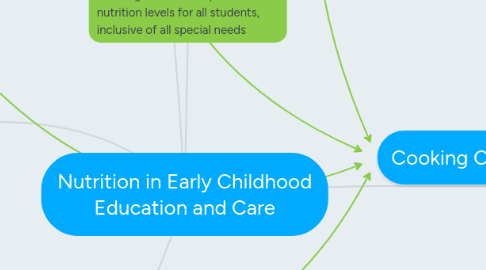
1. Education and Care Services National Regulations
1.1. Part 4.2 Children's health and safety. Division 1: health, safety and wellbeing of children. - Section 79 Service providing food and beverages: (1) The approved provider of an education and care service that provides food or a beverage to children being educated and cared for by the service must ensure that— (a) the food or beverage provided is nutritious and adequate in quantity; and (b) the food or beverage provided is chosen having regard to the dietary requirements of individual children taking into account— (i) each child’s growth and development needs; and (ii) any specific cultural, religious or health requirements.
2. Australian Dietary Guidelines
2.1. Guideline 1: Children and adolescents should eat sufficient nutritious foods to grow and develop normally.
2.2. Guideline 2: Enjoy a wide variety of nutritious foods from these five groups every day: - Plenty of vegetables - Fruit - Grain (cereal) foods - Lean meats and poultry, fish, eggs, tofu, nuts and seeds, and legumes/beans - Milk, yoghurt, cheese - And drink plenty of water.
3. Australian Dietary Guidelines: 'Healthy Eating for Children'
3.1. Children aged 4-8 years should have, per day: - 4 serves of grains - 4.5 serves of vegetables/legumes - 1.5 serve of fruit - 1-2 serves dairy products - 1.5 serve of lean meat, fish, poultry, nuts.
4. Early Years Learning Framework
4.1. Outcome 1: Children have a strong sense of identity - This is evident when children: be open to new challenges and discoveries; increasingly co-operate and work collaboratively with others; share aspects of their culture with the other children and coordinators.
4.2. Outcome 2: Children are connected with and contribute to their world - This is evident when children: explore, infer, predict, and hypothesise in order to develop an increased understanding of the interdependence between land, people, plants and animals; develop an awareness of the the impact of human activity on environments and the interdependence of living things.
4.3. Outcome 3: Children have a strong sense of wellbeing. - This is evident when children: show an increasing awareness of healthy lifestyles and good nutrition
4.4. Outcome 4: Children are confident and involved learners - This is evident when children: make connections between experiences, concepts and processes; transfer knowledge from one setting to another
5. Cooking Class and Community Picnic
5.1. Possible Curriculum Sectors
5.1.1. Literacy
5.1.1.1. Creating and writing recipes
5.1.1.2. Ingredient and shopping list writing
5.1.1.3. Reading cook books
5.1.2. Science
5.1.2.1. Discussion of digestive process and nutrient absorption
5.1.2.2. Growing vegetables and herbs
5.1.2.3. Basic chemistry - mixing and cooking
5.1.3. Social/Cultural
5.1.3.1. eating together
5.1.3.2. Discussions of food likes and dislikes
5.1.3.3. Sharing of recipes and eating practices from home
5.1.3.4. Cultural explorations through foods and eating habits
5.1.4. Mathematics
5.1.4.1. Introduction to fractions
5.1.4.2. Numeral recognition - quantities and measurements when cooking
5.2. Challenges
5.2.1. Vegetarian/Vegan Children
5.2.2. Religious and Cultural Practices
5.2.3. Physical Disability such as cerebral palsy
5.2.4. Uneducated Families
5.2.5. Fussy Eaters
5.2.6. Allergies/Intolerances
5.2.7. Sufficiently healthy and varied recipes
